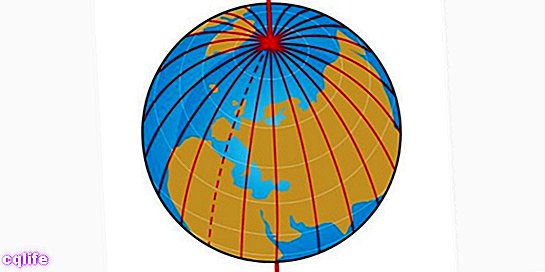We explain what length is in physics and geography, what they have in common in both disciplines and their relationship with other concepts.

What is the length?
Length can designate different notions, depending on the specific area, but always in the sense of a flat and linear distance. In fact, the Dictionary of the Spanish Language defines it as a “physical magnitude” and as the “linear dimension of a flat surface”.
Length is a metric concept, with which you can account for distances.
It is used in the physical and in the geography, being able to have a different meaning in the latter, as regards the Geographic Coordinate System.
Broadly speaking, the term length is used toto size the distance or the length of things or phenomena, as in "wavelength", "long jump", and so on.
Physical length
In the field of physics, longitude is considered one of the fundamental magnitudes of the universe, from which other different ones derive, but which cannot be explained by them. It serves as a framework for reference from distances, and from it come the length or dimensional length of objects, real or imaginary.
Initially, it was considered as the distance of straight segments, to later proceed to measure the length of the curves or circumferences. As long as it is linear, it can be spoken of length, since other magnitudes such as area or volume they involve two and up to three simultaneous dimensions.
However, these notions about length were questioned by Albert Einstein in the 20th century because, according to theTheory of relativity, the length depends on the measurements made by its observers, that is, it is not intrinsic to objects and spaces.
Lenght measures
Length is commonly measured in meters (m) and its multiples and submultiples, according to the International System of Units (YES). The most used on a daily basis are kilometers, centimeters and millimeters.
However, to measure particularly long lengths, such as those in outer space, units such as the light year (the distance that thelight in a year, that is, about 9,460,730,472,580.8 km), or the Astronomical Unit (AU, equivalent to the average distance between the Earth and theSun, that is, 149,597,870,700 meters) or the parsec (parallax of an arc second, equivalent to 206,265 AU).
Geographic longitude

In the field geographical Y cartographicOn the other hand, longitude is understood as the angular distance between any point on the globe and the zero meridian (or Greenwich Meridian), which divides the planet into two hemispheres: western (west) and eastern (east). This distance is measured with respect to parallel closest and having the center of the Earth.
It is, therefore, an imaginary construction that allows any point to be located on the horizontal axis of the globe and which, together with latitude, forms a coordinate system used in geolocation.
Longitude is measured in sexagesimal degrees, from 0 ° to 360 ° along the equatorial plane and indicates which hemisphere you are in: West (W, sometimes W) or East (E).
Longitude and latitude
Together withlatitude, the longitude forms an angular geographic coordinate system. From them the planetary position of any point of the land surface. This system is used by technologies like GPS (Global Positioning System). It is expressed in sexagesimal degrees, for both latitude and longitude, in parentheses.
For example: the latitude and longitude of the city of Hong Kong, China, is 22 degrees, 15 minutes and 00 seconds north latitude (N) and 114 degrees, 10 minutes and 00 seconds east longitude (E). Or what is the same: (22 ° 15 '00' 'N; 114 ° 10' 00 '' E).
